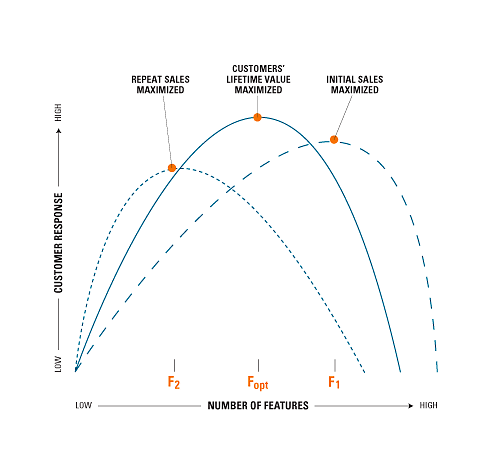In today’s dynamic digital landscape, products face a constant push for new features. This relentless pursuit, however, can lead to “feature fatigue,” overwhelming users and diluting the core product value. Navigating this pressure requires a strategic approach to prioritization and management of features. This article explores effective strategies to combat feature fatigue and ensure your product retains its focus and effectiveness.
Understanding Feature Fatigue:
Feature fatigue arises when a product accumulates features at a rate exceeding user needs or understanding. This overload leads to:
- Confusion: Users struggle to navigate the complex functionalities, hindering their experience.
- Reduced adoption: New features may remain unexplored due to perceived difficulty or lack of perceived value.
- Increased maintenance: Managing a bloated feature set consumes resources, diverting focus from core functionalities.
- Diluted brand identity: A cluttered product loses its distinct value proposition, blurring its differentiation in the market.

To achieve (Fopt) the happy medium, as we can see in the above chart, companies must take care not to include too many features in their products in an attempt to maximize initial sales, or to include too few features, as they might if they focused strictly on maximizing repurchases.
Source: Harvard Business Review
Prioritization Frameworks:
Combating feature fatigue requires robust prioritization frameworks. Consider these approaches:
- Impact vs. Effort Matrix: Plot features based on their potential impact on user value and the development effort required. Prioritize high-impact, low-effort features first.
- MoSCoW Method: Categorize features as Must-Have, Should-Have, Could-Have, and Won’t-Have based on criticality and feasibility.
- RICE Framework: Evaluate features based on Reach, Impact, Confidence, and Effort, assigning numerical scores to determine priority.
Effective Feature Management Practices:
Beyond prioritization, implement these practices for successful feature management:
- Data-driven decision making: Utilize user feedback, analytics, and A/B testing to objectively assess feature value and impact.
- Minimum Viable Product (MVP) approach: Launch features with core functionalities first, gathering user feedback before investing in full development.
- Feature sunsetting: Regularly evaluate features and sunset those with low usage or impact, streamlining the product experience.
- Clear communication: Inform users about new features and their functionalities to enhance adoption and reduce confusion.
- Documentation and support: Provide comprehensive documentation and support resources for new features to facilitate user learning.
Building a Culture of Value-Driven Development:
Combating feature fatigue goes beyond mere processes; it requires cultivating a culture of value-driven development. Foster an environment where:
- User needs are paramount: Decisions prioritize solving user problems rather than chasing trends or internal desires.
- Collaboration is encouraged: Developers, product managers, and designers work together to ensure features align with user needs and technical feasibility.
- Metrics matter: Data guides decision-making, ensuring features deliver demonstrable value to users and the business.
- Focus overtakes fear: The team prioritizes essential features even when faced with pressure to add more.
Additional Strategies:
- Leverage user feedback mechanisms: Implement feedback channels, conduct user interviews, and actively analyze user reviews to understand their needs and pain points.
- Utilize product roadmaps: Create transparent roadmaps outlining planned features and timelines, managing user expectations and aligning internal teams.
- Embrace experimentation: Test new features with smaller user groups before full-scale rollouts, minimizing risk and maximizing valuable insights.
- Measure feature performance: Continuously track key metrics like usage, engagement, and conversion rates to assess the impact of new features.
Conclusion:
Combating feature fatigue is an ongoing challenge in a dynamic product landscape. By implementing effective prioritization frameworks, employing sound feature management practices, and fostering a culture of value-driven development, teams can navigate the feature landscape effectively. Remember, prioritizing user needs, focusing on high-impact features, and constantly measuring the value delivered are key to maintaining a product’s clarity, usability, and ultimately, its success.

